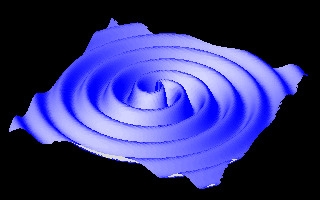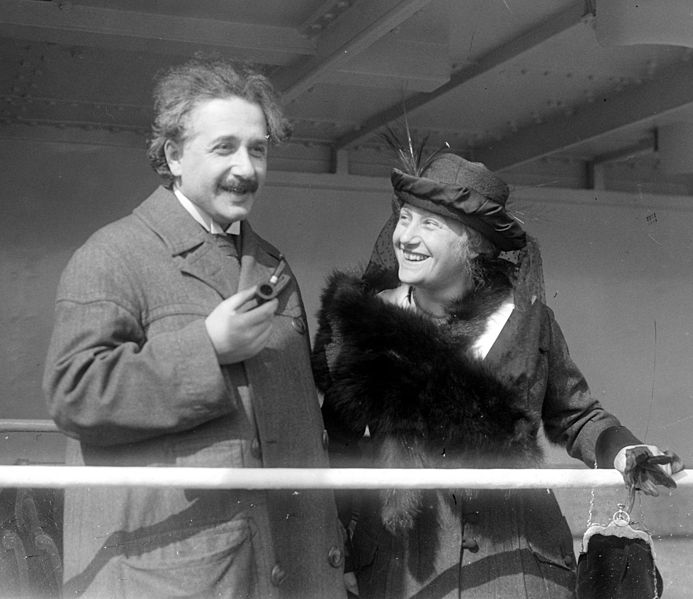
Meet the barrier-breaking physicist hunting gravity with lasers
Nergis Mavalvala explores gravitational waves and quantum physics
Twenty years before Interstellar turned gravity, wormholes, and black holes into mainstream fodder, then-graduate student Nergis Mavalvala had just learnt about gravitational waves from her advisor, Rainer Weiss, now a Nobel laureate.
She thought he was absolutely crazy. "Detecting these waves sounds like a nearly impossible mission," she mused. But the seed of interest had been planted.
Now, Mavalvala is a celebrity in her own right. A celebrated physicist, Pakistani-born, openly queer, and a mother of two, she is a non-conformist, simply by the virtue of being herself.
She holds the Kathleen and Curtis Marble Professor of Physics position at MIT and is one of the stalwarts in a long, arduous, and deeply human discovery of faraway perturbations rippling through the universe. For the past decade, her lab has focused on engineering high-precision laser beams using the principles of quantum physics to enhance the ability to detect signals from deep space. I walked to her office to discuss her personal journey towards this monumental moment in physics.

Mavalvala beckoned me into her office with a friendly grin. The room was filled with books and her children’s toys. I placed my recorder on top of the table, next to a chocolate box which had a thank you post-it note from a colleague. It is difficult to believe that some of the ideas for such a crucial scientific discovery came from such an unassuming, unimposing room.
Our conversation has been condensed and edited for clarity.
Prabarna Ganguly: A century ago, Einstein theorized that astronomical objects such as black holes or neutron stars orbiting around each other, or merging into each other, would disturb spacetime. Could you explain the technology used to detect these ripples?
Nergis Mavalvala: If you want to design a detector to measure any effect, the first thing you have to ask is, "What does the effect do? What happens when a gravitational wave passes by us, here on Earth?" On Earth, and anywhere in space, these ripples shrink and stretch space itself. It is like a rubber sheet – it expands when pulled, and contracts a little later.
The principle behind detecting gravitational waves is to measure this change in distance between two points caused by such a passing gravitational wave. Easy, right? Take a ruler, measure the distance, and if that distance gets shorter, the ruler will tell you. But the problem with gravitational waves is that they are really weak, and incredibly faint. When you are trying to make measurements at magnitudes 1/1,000 the width of a single proton, you cannot buy anything from the shop. Everything has to be made by us.
So you actually had to build the instrument before any detection was possible? It seems like a venture that requires a tremendous amount of patience.
When I started graduate school with Rai Weiss, he told me that LIGO [the Laser Interferometer Gravitational-Wave Observatory] was about to be built and that I could probably get data from the first instruments that were built. That data did not come until 20 years later. But I didn’t feel impatient or discouraged because there were so many discoveries along the way. We were constantly innovating. We were building the most precise ruler in the world. [LIGO’s advanced lasers have been used to build LED chips, iPhone printed circuit boards, and Intel microprocessors.]

Wavy space
On September 14, 2015, gravitational wave GW150914 reached Earth; 1.3 billion years ago, two black holes had collided into each other, emanating ripples through the universe. You saw the signal. How did it feel?
Most of us did not really believe it. As Carl Sagan once said, "Extraordinary claims require extraordinary evidence." We had to build that evidence. When you have a discovery such as this at stake, you can’t say, oh, sorry, we made a mistake.
We have a procedure by which we test the validity of our computer algorithms by inserting fake signals into the detection stream. So we checked if it was a byproduct of these fake signals, and it wasn’t there. The excitement increased a little.
Over the next few days, we asked the question, what else could this be? Could this be some form of instrumental artifact? Could it be some malicious injection, where we didn’t do it but someone else did? We checked all possible scenarios of misdoings, or mistakes. But they all panned out. So it was not an instantaneous celebration. After every other possible cause had been eliminated, then we were like, OK. This is it.
Why do you think such an esoteric discovery garnered such immense media and public hype?
There are a number of things. If you go back to the early 20th century, Einstein was a darling of the media, and became a household scientific name, in part because of relativity. Then there was a whole period of decades when relativity was almost forgotten. Not just by the public and the media, but also, to a great extent, by scientists. But then came this resurgence of its importance, because of a series of discoveries. The 1960s and 70s saw the first discoveries of neutron stars and black holes, which are inherently relativistic objects.

Media darling, they say
The public has started to understand, in part, because scientists have become better at explaining that relativity matters in our everyday lives. For example, our GPS system simply would not function if we didn’t include the principles of general relativity. Also, and this is political, but all the crap that is going on in Washington makes people hungry from some feel-good news. Scientific discoveries like these, that are not going to destroy our planet, or bring about yet another nuclear war or mass destruction, are those feel-good stories. It brings hope.
Being a Pakistani queer woman physicist, were there personal or professional barriers placed that make/made it difficult, because of those labels?
[Mavalvala laughs] I am the type of person who does not notice barriers. So if there are any, I tend to walk right through without noticing I crashed into one. But breaking barriers has both good and bad elements to it. The good part: if you have a mission, you get it done. The bad part: since you do not notice these barriers, you cannot take them down systemically for others. I might have helped myself by being this way. But have I done anything useful for anyone else? I am not sure.
What do you wish for the upcoming generation of scientists?
I want them to live a life of integrity, and be kind. When I talk to my students, nothing makes me more proud than when they discover something in their labs. But I am proudest of them when they act with integrity, collaborate, and are kind, dignified citizens.
